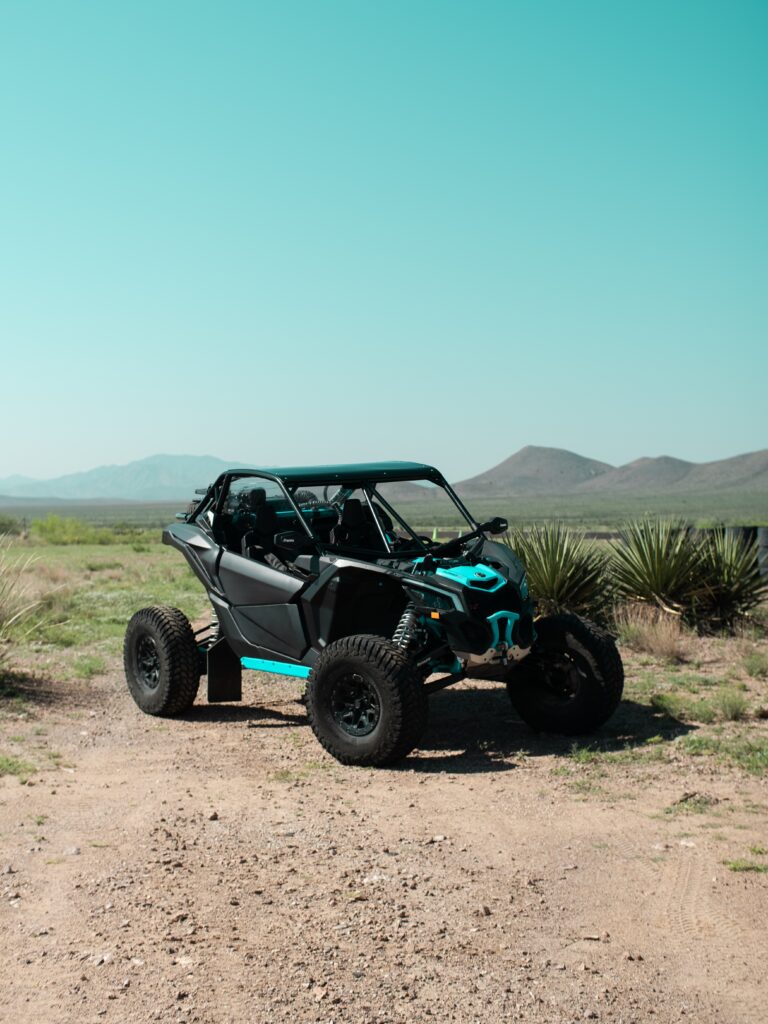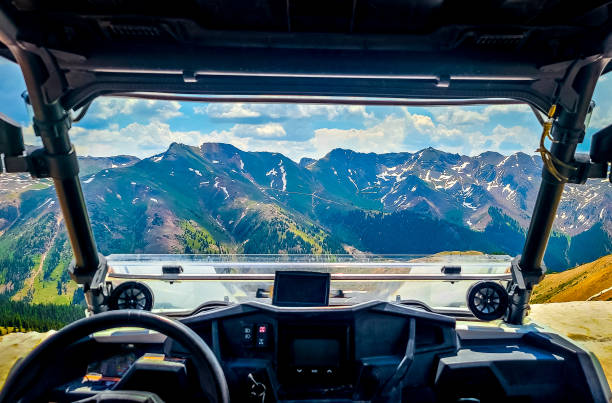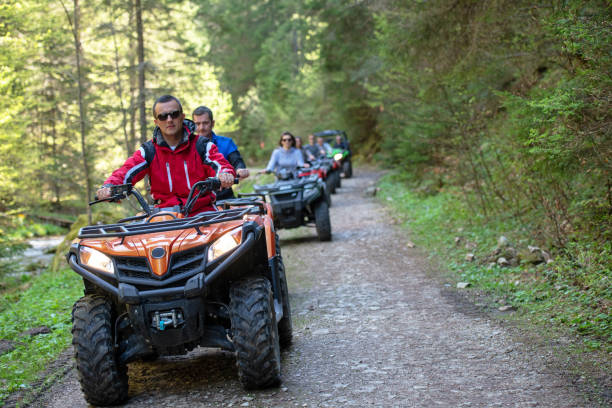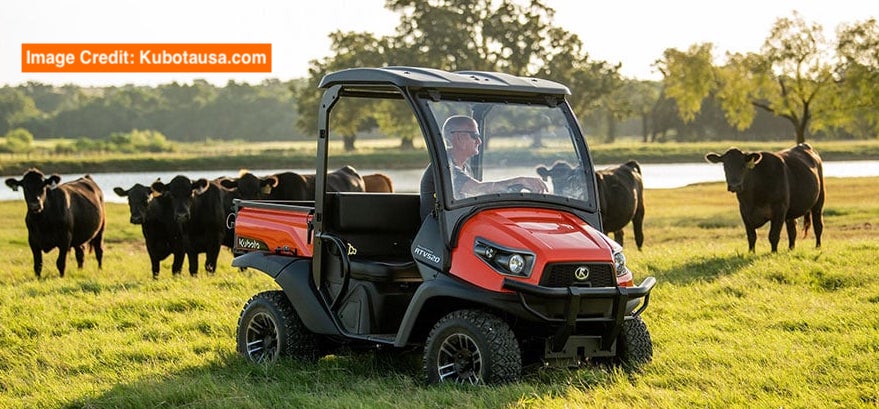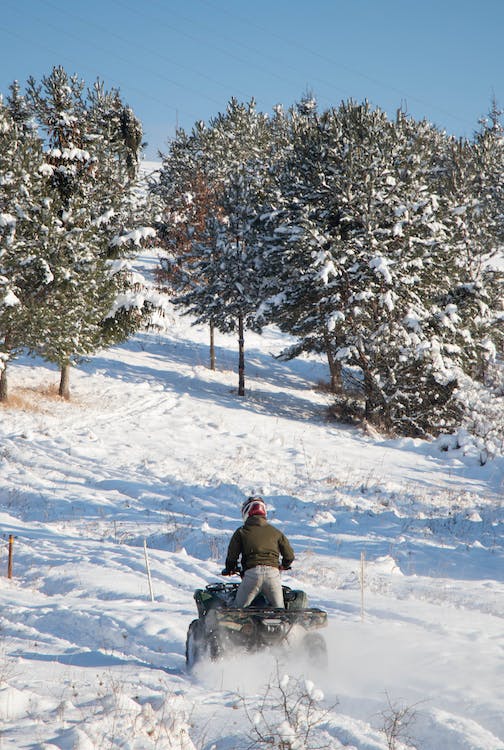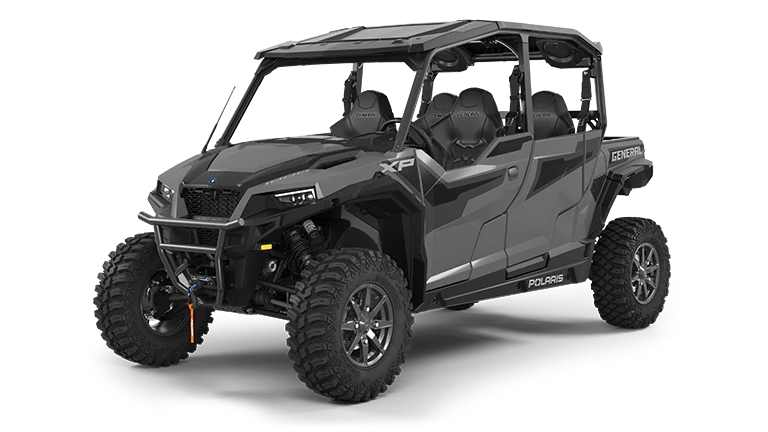As an Amazon Associate I may earn a commission from qualifying purchases at no additional cost to you.
Polaris vs. Can-Am vs. Yamaha Side-by-Side? When it comes to selecting the perfect side-by-side ATV for your off-roading needs, narrowing down your options can be a tough decision.
Three popular ATV brands dominate the market: Polaris, Can-Am, and Yamaha. Each brand has its unique strengths, and understanding these differences is crucial in making the right choice.
Polaris, Can-Am, and Yamaha have been in the ATV business for years, consistently producing high-quality, innovative side-by-sides that cater to various needs and preferences.
From recreational to utility-focused vehicles, these brands offer a plethora of options to choose from. In this article, we will compare the key features of each brand, such as performance, reliability, and overall value, to help you decide which option is best suited for your needs.
Each brand has its flagship models, like Polaris General, Can-Am Commander, and Yamaha RMAX, which showcase the best of their respective offerings (UTV Driver).
Also, if you are looking for more side-by-side information be sure to check out our Ultimate Side-by-Side ATV Guide!
Pricing and Models
When looking at the pricing and models of side-by-side ATVs from Polaris, Can-Am, and Yamaha, as you would expect, each brand has unique models with various price points to suit different customers and uses.
Polaris is known for its wide range of models in various price ranges. Their lineup includes the RZR, Ranger, and General series. One of their popular models, the RZR Pro R, has made a significant impact on the market. (source)
Can-Am offers a range of side-by-side models, including the Maverick, Commander, and Defender series. The Can-Am Defender HD10, for example, is recognized as one of the best utility side-by-side UTVs.(source)
Yamaha provides a variety of models, such as the Wolverine and Viking series, with the Yamaha Wolverine X4 XT-R known for its performance and pricing. (source)
As for pricing, some examples of new models from each brand include:
- Honda Pioneer 1000: $15,799
- Kawasaki Teryx4 LE: $16,999
- Yamaha Wolverine X4 XT-R: $18,149
- Can-Am Defender: models start at $12,399
Keep in mind that prices can vary depending on features, trim levels, and location. You will need to research the specific models you’re interested in to get a better understanding of their pricing and available options.
Engine Performance and Power
Polaris is known for its powerful and smooth-running engines, demonstrated in models like the Polaris RZR XP 1000 Sport. They focus on designing ATVs that excel in torque and horsepower, providing riders with exceptional off-road capabilities.
Can-Am, on the other hand, offers ATVs like the Maverick X3 X RC Turbo RR 72 and the Maverick X3 MAX DS Turbo 64. These models boast powerful turbocharged engines, providing high energy output and enhanced performance, making them suitable for aggressive off-road driving.
Yamaha side-by-side ATVs focus on providing a balanced combination of power and handling, as shown in their large-engine ATVs. Yamaha engines are known to be reliable and efficient, allowing for enjoyable worry-free off-road experiences for their users.
Polaris, Can-Am, and Yamaha each bring their unique strengths in engine performance and power. Polaris excels in torque and horsepower, Can-Am offers powerful turbocharged engines, and Yamaha focuses on reliable, balanced performance. Ultimately, your choice will depend on your individual preferences and intended ATV usage.
Suspension and Handling
When comparing the suspension and handling of Polaris, Can-Am, and Yamaha side-by-sides, it’s important to compare various components such as shock absorbers, suspension travel, and vehicle stability. Each brand has its unique suspension systems, offering different levels of performance and comfort.
Polaris is well-known for its smooth ride quality, thanks to the advanced suspension designs present in models like the RZR XP 1000 Sport. With a front suspension featuring Independent double wishbones and rear suspension boasting trailing arm designs, Polaris UTVs offer impressive suspension travel and handling capabilities. The adjustable shocks allow riders to fine-tune the suspension according to their riding preferences and terrain conditions (Men’s Journal).
Can-Am, on the other hand, is recognized for its innovative and aggressive suspension system in models like the Maverick X3 X RC Turbo RR 72. With a front suspension featuring double A-arms and an advanced rear suspension setup, the Can-Am UTVs deliver excellent performance on various terrains. The FOX shocks equipped in these vehicles provide responsive handling and improved comfort (SBSS).
Yamaha offers a balanced suspension system and handling capabilities in its side-by-side models. Vehicles like the Yamaha Viking are equipped with independent double wishbone suspensions, ensuring a comfortable ride and good handling characteristics on uneven surfaces (bikesales.com.au).
Each brand offers distinctive suspension systems and handling features, catering to different rider preferences and performance expectations. It’s crucial to compare these aspects when choosing the right side-by-side ATV to ensure optimal riding experience and vehicle performance.
Accessories and Customization
When it comes to accessories and customization, each of the three brands – Polaris, Can-Am, and Yamaha – offers a wide range of options for buyers. These options allow you to tailor your vehicles to your specific needs, preferences, and driving environments.
Polaris – Polaris has a vast selection of accessories available for their side-by-side ATVs, including storage, protection, performance parts, and more. They also collaborate with well-known aftermarket suppliers to increase their range of customizable parts. Polaris’s accessories can be found on their official website.
Can-Am – Can-Am is known for its high-quality accessories and customization options. They offer a variety of parts and upgrades for their Maverick X3, Commander, and other side-by-side models. At UTV Source, Can-Am users can find accessories ranging from protection equipment to performance-enhancing parts.
Yamaha – Yamaha side-by-side ATVs, such as the YXZ models, also have a range of accessories available for customization. These accessories include storage solutions, protection equipment, performance parts, and more to improve the overall user experience.
In addition to these brand-specific accessories, there are also numerous custom side-by-side builders and aftermarket suppliers, as detailed on sbis-mo.ru. These builders work with various brands, including Polaris, Can-Am, Yamaha, and others, providing unique and personalized customization options to suit individual needs.
Safety Features
When comparing side-by-side ATV brands, safety features are a critical aspect to consider. Polaris, Can-Am, and Yamaha all offer a range of safety features to ensure riders stay protected while navigating challenging terrains.
Polaris: Polaris models, like the RZR series, come equipped with advanced safety features such as 3-point seatbelts, roll cages, and automotive-style 4-wheel hydraulic disc brakes. The brand also offers youth series ATVs with additional safety measures, including adjustable speed limiters and a safety flag for visibility (UTV Driver).
Can-Am: Can-Am’s Maverick series includes features like 4-point seatbelts, rollover protection, and reinforced steel chassis for added security. Moreover, the brand’s Defender series boasts a variety of safety features, including reinforced cages, integrated front bumpers, and enhanced undercarriage protection (Men’s Journal).
Yamaha: Known for its reliable and durable ATVs, Yamaha incorporates safety features such as automotive-style 4-wheel disc brakes, robust roll cages, and three-point seatbelts. Additionally, the brand’s Wolverine series features a four-wheel independent suspension for improved stability (bikesales.com.au).
While all three brands prioritize rider safety, it is essential for consumers to consider their individual needs and preferences when choosing an ATV. Investing in appropriate safety gear like helmets, gloves, and protective clothing is also crucial, no matter which brand or model is best suited for you.
User Experience and Reputation
When considering side-by-side ATVs, user experience and reputation play a significant role in determining the best choice for consumers. Polaris, Can-Am, and Yamaha are three leading brands in the market, each offering unique features and benefits.
Polaris is known for its wide range of UTV models, such as the RZR series, which is popular among off-road enthusiasts. The brand has a solid reputation for durability and performance, as showcased in its RZR XP Turbo. However, it’s essential to keep in mind that the user experience may vary across different models and terrain types.
Can-Am, on the other hand, is renowned for its powerful performance, with models like the Maverick X3 X ds being a top choice for adventure seekers. Users praise Can-Am for its excellent suspension systems and handling in rough terrain, while also acknowledging the brand’s higher price point compared to competitors.
Yamaha, a well-established name in the power sports industry, offers side-by-sides like the RMAX, which is designed for both work and recreation. Yamaha is recognized for its reliability and build quality, making it a trusted choice for many users.
In terms of user experience, each of these brands has its strengths and drawbacks. Polaris is known for its versatility, Can-Am for raw power and suspension, and Yamaha for reliable performance. Ultimately, the choice comes down to personal preferences and intended uses for the side-by-side ATV.
Warranty and Support
When considering purchasing a side-by-side ATV, understanding the warranty and support policies is important. For the most part, the extended warranties have differences, but the factory warranty is very similar for all three manufacturers.
Polaris: Polaris provides a 6 months factory warranty for their side-by-side ATVs. In addition, they offer extended warranty options through their Polaris Protection Plan, which can cover parts and labor for up to 60 months after the original purchase date. More information about Polaris’ warranty and protection plans can be found here.
Can-Am: Can-Am offers a 6 months factory warranty for their side-by-side ATVs, with coverage that can be extended through their B.E.S.T. (BRP Extended Service Terms) program, which can extend coverage for up to 36 months. Details about Can-Am’s warranty and B.E.S.T. program can be found on their website.
Yamaha: Yamaha provides a 6 months factory warranty for their side-by-side ATVs. They also offer extended warranty options through their Yamaha Extended Service (Y.E.S.) program, which allows for coverage extensions of up to 48 months. More details about Yamaha’s warranty and Y.E.S. program can be found on the Yamaha Motorsports website.
When weighing the pros and cons of each brand’s warranty be sure to consider dealership support and whether or not you plan to take advantage of the extended warranty as this can impact the overall experience and maintenance of your side-by-side ATV.
Conclusion
In the world of side-by-side ATVs, Polaris, Can-Am, and Yamaha are three major players with a wide range of offerings for different needs and preferences. While each brand has its strengths and weaknesses you will need to focus on what truly matters to you when making a decision.
Polaris boasts robust performance and is well-regarded for its off-road capabilities, with offerings like the RZR PRO XP garnering high praise. Can-Am also receives recognition for their performance, especially with UTVs like the Can-Am Maverick X3 X rs, which competes head-to-head with Polaris.
On the other hand, Yamaha offers a reputation for durability and long-lasting quality, with the YXZ1000R Turbo being one example of a reliable, high-performance UTV. Additionally, Yamaha’s commitment to establishing a loyal customer base through reliable products sets them apart from other brands.
Ultimately, the choice between Polaris, Can-Am, and Yamaha depends on your specific needs and what you plan to do with the machine. Factors such as performance, reliability, price, and personal preferences should all be taken into consideration when deciding which side-by-side ATV brand to choose.

